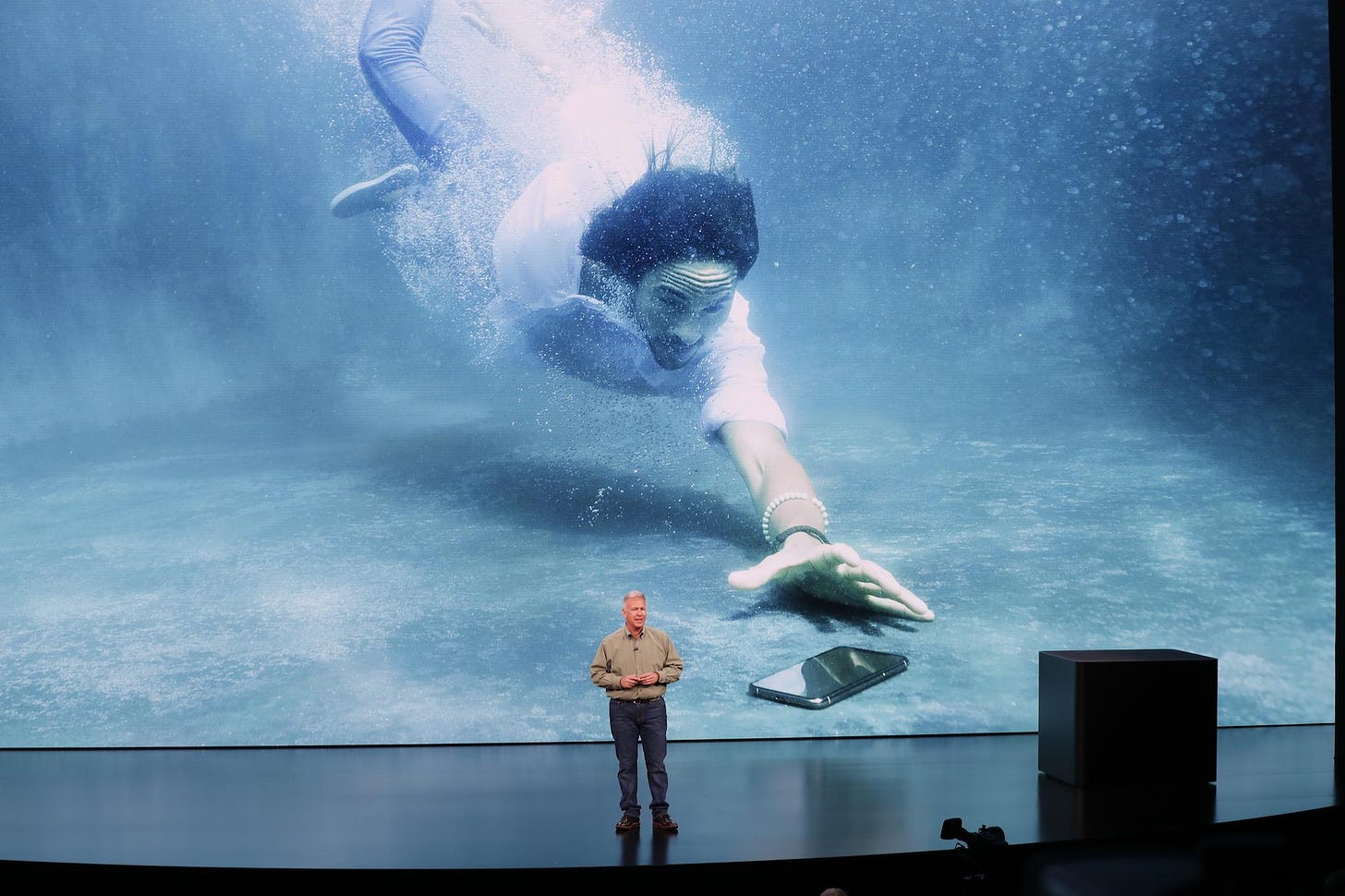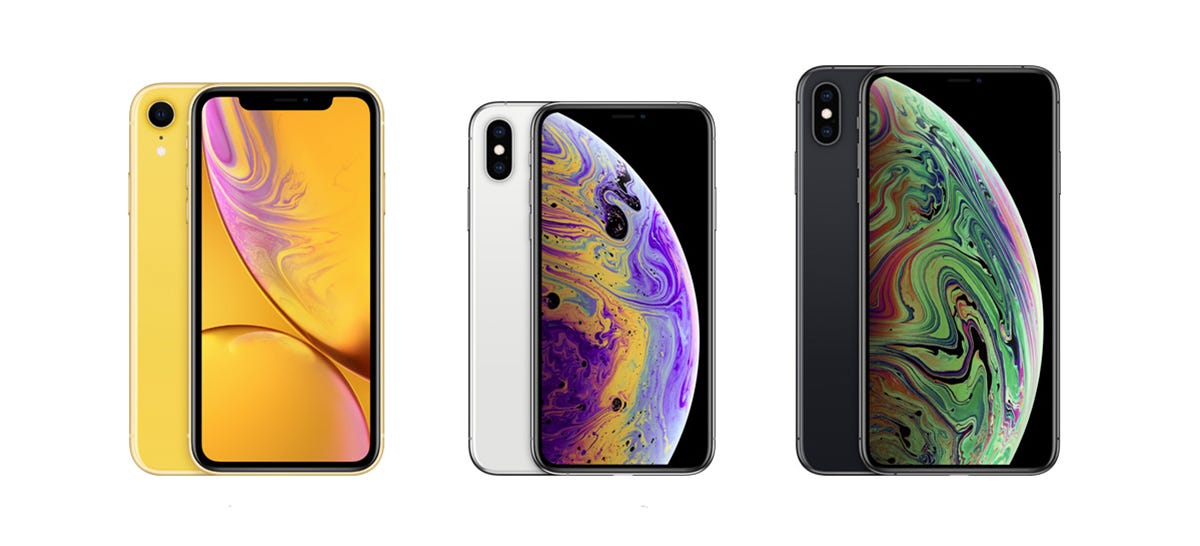Apple unveils iPhone XS, XS Max, XR: Which one’s for you?
Click to read the full story: Apple unveils iPhone XS, XS Max, XR: Which one’s for you?
As with each year, Apple has shown off their latest iPhone line which is more expensive than last year’s iPhone X, and they come with the usual pros and cons. Here’s our guide to help you wade through the iPhone XS, the iPhone XS Max and the iPhone XR. Whatever happened to just giving them the number afterward?
Sales have slowed for the tech giant, but the biggest news is that the iPhone X is gone along with all the older iPhone models that came with headphone jacks.
CEO Tim Cook showed off the iPhone XS Max, which has a bigger screen than the one on last year’s dramatically designed model, the iPhone X. It’ll cost about $1,100, topping the iPhone X, which at $1,000 seemed jaw-dropping at the time. An updated iPhone X, now called the XS, stays at $1,000.
As with the iPhone X, both new phones have screens that run from edge to edge, an effort to maximize the display without making the phone too awkward to hold. The screen needs no backlight, so black would appear as truly black rather than simply dark. The Max model looks to be about the size of the iPhone 8 Plus, though the screen size is much larger.
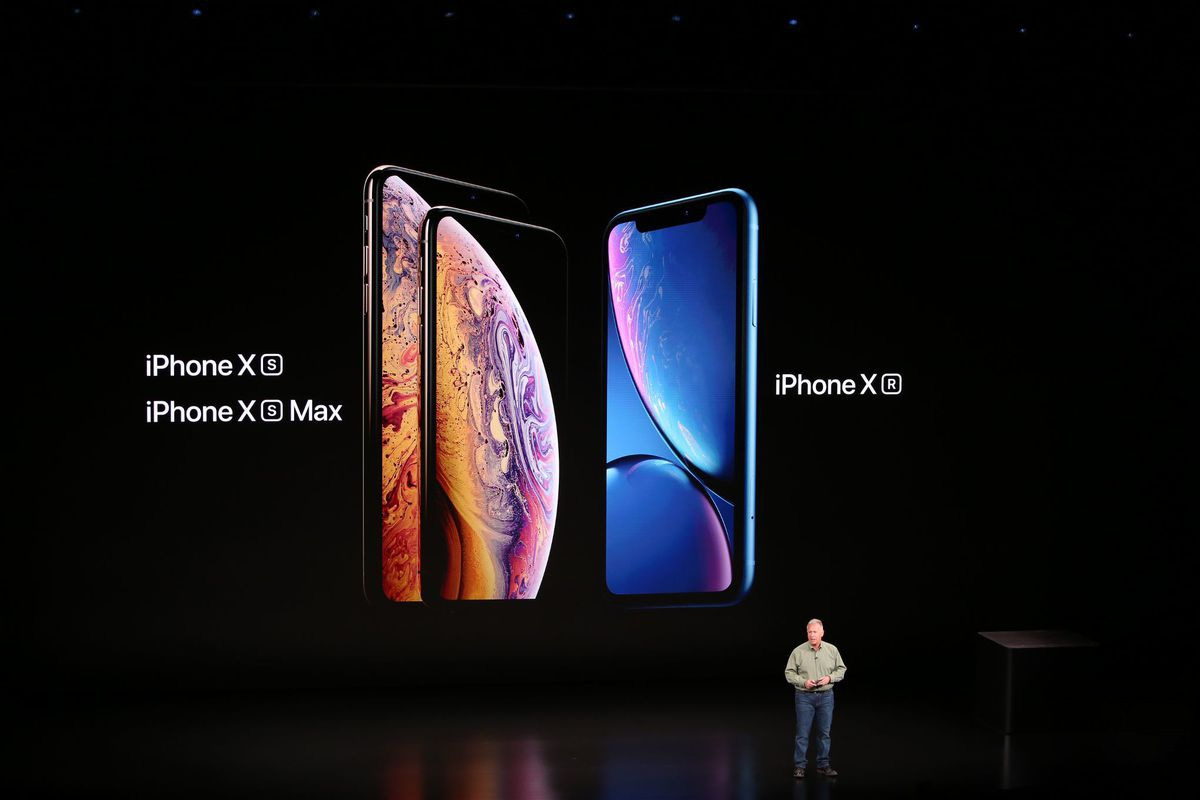
The iPhone XS Max, which will be available on Sept. 21 — with orders open the week before — represents Apple’s attempt to feed consumers’ appetite for increasingly larger screens as they rely on smartphones to watch and record video and to take photos wherever they are.
By making more expensive iPhones, Apple has been able to boost its profits despite waning demand as people upgrade phones less frequently. iPhones fetched an average price of $724 during the April-June period, a nearly 20 percent increase from a year earlier.
Apple also showed off a cheaper iPhone, called the iPhone XR. It has a traditional, lower-quality screen and an aluminum body; it’s physically smaller than the iPhone 8 Plus but has a bigger screen. It’ll cost roughly $750 and come out on Oct. 26.
All three new models join the iPhone X in getting rid of the home button to make room for more screen. They will have facial-recognition technology to unlock the device.
Although it didn’t sell quite as analysts anticipated, the iPhone X still emerged as the most popular in Apple’s line-up, according to Cook. That emboldened the company to aim an even more expensive device at the affluent households that tend to gravitate to its products, especially in the U.S. and Europe.
For everyone else, many of whom are still using iPhones they purchased several years ago, there’s the XR.
“I am going to go out on a limb and say the XR is going to become Apple’s top-selling iPhone,” said analyst Patrick Moorhead of Moor Insights. “It is a smart strategy to keep more people in the Apple ecosystem and get even more people to come into it.”
The next major update to the iOS will be released next Tuesday, followed a week later by a Mac software update. Both will be free to install.
Apple also announced updates that push its Apple Watch further into medical device territory. It has a larger screen and a built-in heart sensor that the company said can detect irregular heart rates and perform an electrocardiogram. The latter feature has been cleared by the U.S. Food and Drug Administration, the company said.
Ben Wood of CCS Insight said getting U.S. regulatory clearance for that is a milestone that underscores the company’s leadership in health and fitness. Typically, smartwatches are marketed as consumer devices, not medical ones needing clearance.
These features will be available to U.S. customers later this year, but Apple did not say when it would make it to the rest of the world.
In addition, Apple said the Series 4 Apple Watch will also be able to detect when someone falls — and can tell the difference between a trip and a fall. If it detects a fall and the user doesn’t respond in a minute, it’ll automatically call for help. This feature may be especially attractive to older people or those with elderly parents worried about falling when no one is around to help.
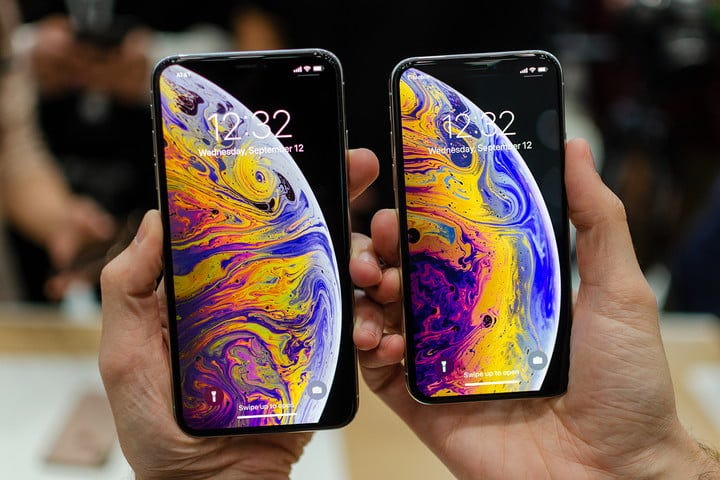
Pros and Cons of Apple’s latest iPhone line:
BEAUTIFUL OLED DISPLAY WITH A 6.5-INCH OPTION FOR DIE-HARD PHABLET FANS
The most important benefit of the iPhone XS and XS Max over the cheaper XR is its display, which is arguably the most impressive smartphone screen on the market. The XS has a 5.8-inch size, 2436 x 1125 resolution OLED display — the same as the original iPhone X — while the XS Max has a 6.5-inch, 2688 x 1242 resolution OLED display. Both devices feature a pixel density of 458 ppi.
This results in the brightest, sharpest, most color-accurate displays Apple has ever produced for its smartphone line. Apple also says the glass encasing the device is an improvement on last year’s model. If you’re a sucker for giant smartphone screens that truly look next-generation in quality, Apple’s XS and XS Max models are no-brainers.
COMPUTATIONAL PHOTOGRAPHY TRICKS, THANKS TO THE A12 BIONIC CHIP
One of the best ways to justify buying one of Apple’s top-of-the-line iPhone models is the advancements the company achieves in mobile photography. In the case of the iPhone XS and XS Max, you’re getting a couple of new features that really take advantage of the interplay between Apple’s software and its new A12 Bionic chip, which helps with onboard processing for tasks that make use of machine learning and other artificial intelligence-powered software.
One of those new features is Smart HDR, which will take a number of photos with varying exposure settings and other manual tweaks and stitch them together similar to what Google does for its Pixel phones. The other is the ability to manually adjust the aperture of a photo, and thus the depth of field, after it’s already been captured. This is something that was pioneered years ago by camera maker Lytro, and it’s usually achieved through the use of light-field photography.
In this case, however, Apple is able to produce the same effect with software by using many of the same computational photography techniques that power its Portrait Mode. (Although, again, it’s worth mentioning that Android phones have been able to do this same technique for quite some time as well.)
RATED IP68 WATER RESISTANCE, DUAL SIM CARDS, STEREO SOUND, 512GB OPTION
The new XS and XS Max have a number of subtle additions that aren’t notable enough to break out as “best” features, including dual SIM support, stereo sound, and a 512GB storage option, to name the most prominent. But one feature that separates the XS from last year’s X and from the new XR is the IP68 rated water, splash, and dust resistance.
It’s one step up from the IP67 rating of the original iPhone X, and it means that you can accidentally submerge your XS or XS Max in up to seven feet of water for as long as 30 minutes. That’s twice the depth that the IP67 rating allows. So if you’re prone to dropping your iPhone into, say, a swimming pool or lake instead of just a toilet or bathtub, the XS is a big improvement in the not-needing-a-replacement-device department.
Given that this year is Apple’s S upgrade year, meaning these phones are only incrementally better than last year’s models, there are quite a few drawbacks to plunking down more than $1,000 for a flagship device that will be outdated 12 months from now. Here’s where the XS and XS Max fall short, and why you might want to consider either holding off for a year or two for newer models or going with the XR instead.
APPLE’S FLAGSHIP IPHONE GETS EVEN MORE EXPENSIVE
When Apple launched the iPhone X last year, it was the very first time the company decided to price its smartphone in the unprecedented thousand-dollar range, with the $999 base model bleeding into four digits after tax or well into the $1,100–$1,250 range if you decided to get one with more storage.
The iPhone XS and XS Max push Apple even further into the luxury, exorbitant consumer electronics territory. Although the base model iPhone XS remains at $999 before tax, a storage upgrade from 64GB to 256GB — because there is no 128GB model — puts you at $1,150 before tax. The 512GB model is a staggering $1,350.
The XS Max’s price is a bit more understandable, considering its larger display. It starts at $1,099 and goes all the way up to $1,449 for a 512GB model. That’s the priciest iPhone that Apple has ever made. And the fact that it costs more than a base-model MacBook Pro is bound to push the XS Max far beyond the realm of possibility for your average smartphone buyer.
THE IPHONE XS AND XS MAX AREN’T THAT MUCH BETTER THAN THE XR
The iPhone X was Apple’s biggest deviation from its fall smartphone refresh strategy in years, in that it gave people with the desire and cash to spare an obvious and visibly superior alternative to the standard iPhone design we became accustomed to. You got the first OLED display on an iPhone in addition to an edge-to-edge design and Face ID.
With the iPhone XS and XS Max, you’re not really getting devices that are all that much better than Apple’s cheaper XR variant. The XR has the same A12 Bionic processor, the same front-facing camera with Face ID and Animoji, and the same bezel-less design. The rear-facing camera doesn’t have the dual-lens system that the original X and the new XS and XS Max have. But it can still perform many of the same Portrait Mode shots and other computational photography tricks, like adjustable aperture to intensify or dampen artificial bokeh effects, thanks to camera software advancements.
Even the display on the XR, which is larger than the display XS, is being touted as an industry-leading version of LCD that Apple is calling Liquid LCD (meaning it uses a backlighting system to fill out the bezel-less screen). So it’s not very likely that most average consumers are going to notice a huge difference between the XR screen and the OLED display on the XS. Granted, the iPhone XS and XS Max have higher-resolution displays with HDR, so that’s worth taking into account if those are features that matter to you.
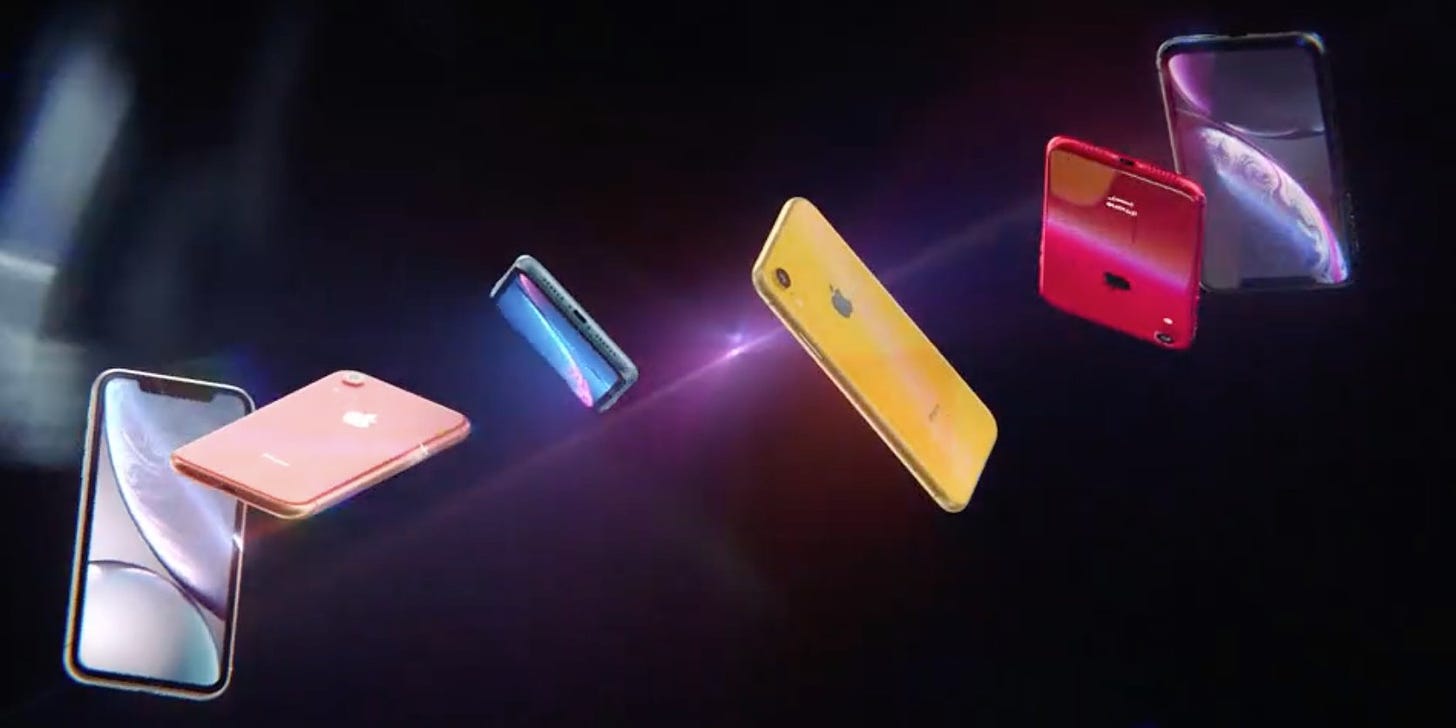
THE IPHONE XS ONLY COMES IN THREE STANDARD COLORS
This may be the most benign complaint to have about the XS and XS Max, but its three standard colors — gold, silver, and space grey — really feel muted and uninspired compared to the XR’s black, blue, coral, red, yellow, and white options.
Apple has always reserved its flashier color options for its cheaper, more mass-market models, all the way back to its iPod line and more recently with the iPhone 5C. And the company routinely locks popular color options, even for accessories, behind specific screen sizes and upgrade tiers as a way to incentivize consumers to upgrade.
Still, it’s a big bummer that you can’t buy a more expressive smartphone from Apple while still enjoying the best specs and hardware its flagship line has to offer. That said, if you’re buying a $1,150 phone, you’re probably going to want to cover the back of it with a case anyway.
The post Apple unveils iPhone XS, XS Max, XR: Which one’s for you? appeared first on Movie TV Tech Geeks News By: Jeffrey Lang



